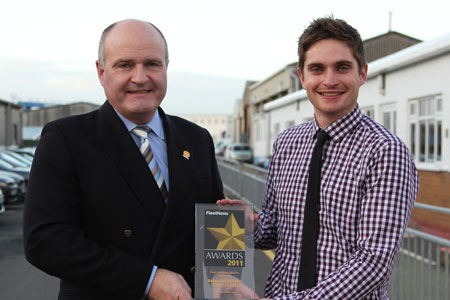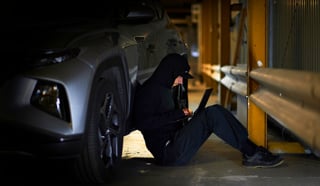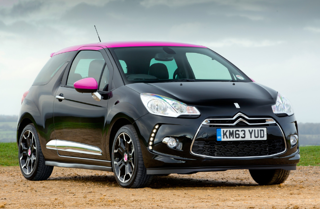Hugh Cole makes a mental note every time he jumps into his car: “I say to myself ‘today I’m going to drive the best I’ve ever driven’,” says the fleet director at Balfour Beatty Plant and Fleet Services.
It’s a mantra he has adopted ever since he took the organisation’s driver development course last year when he was a newcomer to Balfour Beatty.
The pre-requisite to the course is an online driver risk assessment (the Driver Risk Index) which is based on psychometric principals.
Cole does more than 25,000 miles a year and was deemed high risk so he went on a full day’s course consisting of classroom-based and on-the-road training.
The organisation also has three simulators – a static car simulator in Derby, a mobile truck unit and a static truck simulator in Scotland – which can be used to train high-risk drivers such as young drivers.
Training is an important part of the group-wide aim of achieving ‘Zero Harm’ this year. Zero Harm (which launched late-2008) means no seriously disabling injuries, no long-term harm to health and no fatalities to the Balfour Beatty workforce, sub-contractors or members of the public.
Globally, Balfour Beatty suffered five fatalities in 2010 but Cole insists Zero Harm is a realistic target.
The Plant and Fleet division, which operates about 5,000 cars, 3,000 vans and 600 HGVs, as well as sourcing vehicles for other Balfour Beatty businesses, hasn’t had a reportable accident since January 2011.
Its deadline for achieving Zero Harm coincides with the Olympics.
“My original career was in the coal mining industry so I know health and safety is very difficult to manage,” Cole says.
“Zero Harm is the best device I’ve seen to get people to think about health and safety and I think the commitment from everybody in the business is there. It’s so much more than a marketing exercise.”
Head of driver risk Robert Lindsay agrees: “It’s not just a way of encouraging people from a top-down view. It empowers individuals to identify what they feel is unsafe.
"They can turn round and say they don’t want to do a three-hour journey because of Zero Harm.”
Fleet News: How did Zero Harm come to fruition?
Hugh Cole: Before I joined Balfour Beatty Plant and Fleet Services, five fatal risk groups were set up – one of which was driver risk. The groups included people from different levels in the business and tried to determine the best methods of working to reduce risk.
Robert Lindsay: We tried to make sure we covered off every possible eventuality in terms of the risk of fatality or serious injury. There were various different initiatives we looked at such as incentive schemes and poster campaigns. Simple things like campaigns around using your mobile phone while driving can be quite powerful.
FN: Tell us about the simulator courses.
RL: There are a huge number of courses. You can use the simulator for really specific courses such as foreign lorry drivers learning to drive on the opposite side of the road.
ou can put people through an intense hazard awareness course, where they experience 10 to 20 hazards in 10 minutes, without them suffering any injuries if it goes wrong.
There’s a specific young driver course for drivers under 25, looking at risk factors associated with young drivers such as high speed.
FN: What driver feedback have you had?
RL: We get drivers to cast a vote on the course, the venue and the trainers and I review the scores on a monthly basis. We demand that the trainers score eight out of 10 on average across all the questions and we’ve yet to have a month where we have fallen below that.
FN: You specify ABS, ESP and reversing sensors on your vehicles. Do you plan further safety technology?
HC: We’re very interested in exploring anything that will keep our drivers safe but, at the same time, I don’t want any of the drivers to become lazy and rely on technology so there is a balance to be had there.
FN: How much have accidents reduced by?
RL: We’re seeing year-on-year reductions in terms of collisions within Plant and Fleet. Balfour Beatty Rail Projects saw a 40% reduction following the driver risk programme. Driver feedback is great but the best feedback you can get is showing people you are stopping accidents from happening.
FN: How are you tackling the grey fleet?
HC: We have just created a policy where we have a maximum mileage (5,000 business miles) and a maximum vehicle age (five years). We are aware of the risks if you don’t manage it properly.
RL: We’ve made it more of central function as well. Rather than managers collecting copies of business insurance, it’s now a fleet responsibility.
The issue with people in HR looking at copies of insurance or driving licences is whether they know what they are looking for. We’ve got experts in place that know exactly what to do.
Cole plans to hold more Zero Harm days (where the fleet team talks to other Balfour Beatty businesses about safe driving, vehicle checks and Zero Harm activities in general) this year.
Telematics is being offered from both an efficiency and safety perspective.
“It’s not necessarily a stick,” Cole says. “We want to demonstrate to drivers how good they are.”
Cole is also working on the company’s sustainability programme. “We are developing fleet listings with lower CO2,” he says.
“Most parts of Balfour Beatty have CO2 caps but not all. We’re going to be aggressive this year and into 2013 and we could be looking at around 115g/km. We’re at 130g/km for cars at the moment.”
Plant and Fleet Services delivered its first electric car recently (a Nissan Leaf to Balfour Beatty Engineering Services) and is exploring electric vans.























Login to comment
Comments
No comments have been made yet.